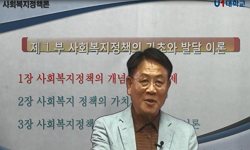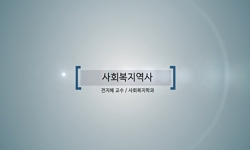What distinguished the massive wave of unemployment that swept through Britain in the interwar years from the previous problems of unemployment was that it was brought about by the 'structural' difficulties that British industry and economy had endure...
http://chineseinput.net/에서 pinyin(병음)방식으로 중국어를 변환할 수 있습니다.
변환된 중국어를 복사하여 사용하시면 됩니다.
- 中文 을 입력하시려면 zhongwen을 입력하시고 space를누르시면됩니다.
- 北京 을 입력하시려면 beijing을 입력하시고 space를 누르시면 됩니다.
부가정보
다국어 초록 (Multilingual Abstract)
What distinguished the massive wave of unemployment that swept through Britain in the interwar years from the previous problems of unemployment was that it was brought about by the 'structural' difficulties that British industry and economy had endured since the later nineteenth century. The notion of 'structural unemployment' thus became one of the centerpieces of industrial and social controversy of contemporary Britain. Although the long-term prosperity and the attendant 'full employment' following the Second World War appeared to have expelled unemployment from the vocabularies of public discussion, the tremendous increase in the number of unemployed from the mid-1970s again brought to mind that the debate over 'the right to work' was still at the heart of social and political issues of British society. There were similarities between the unemployment of the interwar years and that of the later twentieth century in that they were both massive and structural. There were, however, important differences as well, for example, in the regional concentration of unemployment and public attitudes toward unemployment benefits.
Compared with the period prior to WWI, the twentieth-century experience revealed marked continuities with the past. This was particularly true of the ways in which the state responded to the problem of unemployment. The most salient characteristic was that all British governments, regardless of their ideological and political differences, have concentrated on lessening the pain of the unemployed rather than removing the causes of unemployment and creating jobs. The Old and New Poor Laws as well as the Labour Exchange were mainly concerned, not with providing new jobs but with reducing the economic sufferings caused by unemployment. The 1911 National Insurance Act and its expansion in the interwar decades, and the 'welfare state' after WWII, by and large followed this tradition. In order to receive unemployment benefits the applicants should prove that they were actively searching a job, and had to go through the notorious, insufferable means test. The benefits were always below the minimum wages, unemployment allowances could be denied to the unemployed women whose husbands were in work, and relief to the young applicants could be refused except on condition of occupational training. The twentieth-century call for eradicating welfare 'scroungers' had an undeniable continuity not only with the principle of 'less eligibility' the New Poor Law was based on, but with the Victorian dichotomization of the 'deserving' and 'undeserving' poor.
국문 초록 (Abstract)
1920년대와 1930년대에 영국을 휩쓴 대량실업의 물결은 영국산업의 ‘구조적’ 문제에서 주로 기인했다는 점에서 그 이전과는 다른 새로운 면모를 부각시켰다. 이차세계대전 이후의 장기호황...
1920년대와 1930년대에 영국을 휩쓴 대량실업의 물결은 영국산업의 ‘구조적’ 문제에서 주로 기인했다는 점에서 그 이전과는 다른 새로운 면모를 부각시켰다. 이차세계대전 이후의 장기호황과 그에 따른 ‘완전고용’은 실업문제를 정치적, 사회적 화두로부터 아주 추방해버린 것처럼 보였다. 그러나 1970년대 중반부터 진행된 더 장기화되고 더 구조적으로 심화된 실업은 ‘일할 권리’에 대한 논의가 여전히 삶의 중심에 자리하고 있음을 다시 일깨워 주었다. 20세기 전반과 후반의 대량실업 사이에는 유사성과 함께, 예를 들어, 실업의 지역적 편중이나 실업수당에 대한 태도 등에서 적지 않은 차이점도 있었다.
한편, 20세기 경험의 전체를 그 이전과 비교해보면, 특히 실업에 대한 공적 대응에서 강한 연속성이 확인된다. 무엇보다 두드러진 특징은 역대 모든 영국정부는 그 담당자가 어떤 정파나 정당이었든 간에 실업대책의 주된 목표를 일자리의 대대적 창출보다는 실업의 고통을 완화하는 데 두어왔다는 사실이다. 구빈민법과 신빈민법, 그리고 노동교환법 모두가 적극적 고용확대보다는 실업이 초래하는 경제적 궁핍의 완화에 주안점을 두었다. 1911년의 국민보험법과 이것의 확대, 그리고 이차대전 이후의 복지국가 하에서도 과거와의 연속성은 뚜렷했다. 실업에 대한 공적 지원을 받기 위해서는 실업자가 열심히 구직을 추구하고 있다는 것을 증명해야 하고, 혹독하고 자존심 상하는 재산심사를 거쳐야 하며 수혜금도 평균임금 이하로 책정돼왔다. 또한 일자리가 있는 남편을 가진 실직 기혼여성에게는 실업수당이 지급되지 않을 수도 있고 젊은 실직자들에게는 소정의 훈련을 받지 않으면 혜택이 거부될 수도 있었다. ‘복지에 기대 사는 게으름뱅이’를 없애자는 20세기의 구호는 ‘최소혜택의 원칙’에 입각한 신빈민법이나 빅토리아 시대의 ‘지원 받을 가치가 있는 빈자’와 ‘지원 받을 가치가 없는 빈자’의 이분법과 크게 다르지 않다.
동일학술지(권/호) 다른 논문
-
여재(迂齋) 이후원(李厚源)의 생애(生厓)와 정치활동(政治活動)
- 국민대학교 한국학연구소
- 지두환 ( Doo Hwan Ji )
- 2008
- KCI등재후보
-
- 국민대학교 한국학연구소
- 손연홍 ( Youm Hong Son )
- 2008
- KCI등재후보
-
- 국민대학교 한국학연구소
- 문창노 ( Chang Rho Moon )
- 2008
- KCI등재후보
-
『고려사(高麗史)』 지리지(地理志) 역주(譯註) -경산부(京山府) 안동부(安東府) 편(編)
- 국민대학교 한국학연구소
- 박종기 ( Jong Ki Park )
- 2008
- KCI등재후보
분석정보
인용정보 인용지수 설명보기
학술지 이력
| 연월일 | 이력구분 | 이력상세 | 등재구분 |
|---|---|---|---|
| 2026 | 평가예정 | 재인증평가 신청대상 (재인증) | |
| 2020-01-01 | 평가 | 등재학술지 유지 (재인증) |  |
| 2019-05-02 | 학회명변경 | 영문명 : A Laboratory of Korean Studies -> Institute of Korean Studies |  |
| 2017-01-01 | 평가 | 등재학술지 유지 (계속평가) |  |
| 2013-01-01 | 평가 | 등재학술지 선정 (등재후보2차) |  |
| 2012-01-01 | 평가 | 등재후보 1차 PASS (등재후보1차) |  |
| 2011-01-01 | 평가 | 등재후보학술지 유지 (등재후보2차) |  |
| 2010-01-01 | 평가 | 등재후보 1차 PASS (등재후보1차) |  |
| 2008-01-01 | 평가 | 등재후보학술지 선정 (신규평가) |  |
학술지 인용정보
| 기준연도 | WOS-KCI 통합IF(2년) | KCIF(2년) | KCIF(3년) |
|---|---|---|---|
| 2016 | 0.3 | 0.3 | 0.23 |
| KCIF(4년) | KCIF(5년) | 중심성지수(3년) | 즉시성지수 |
| 0.36 | 0.38 | 0.553 | 0.14 |





 KCI
KCI KISS
KISS







